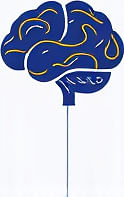Workspace Organization for Adults with Autism in Remote Work
 by Shanie Goodwin
by Shanie Goodwin
Discover practical strategies for creating an organized remote workspace that supports individuals with autism. Learn how simple adjustments can improve focus, reduce overwhelm, and enhance productivity in daily routines.

For many adults with autism, remote work offers a chance to thrive without the pressures of traditional offices. A well-structured workspace can make a big difference in managing daily tasks and maintaining balance. This article explores helpful strategies to set up and organize your space effectively.
Why Organization Matters for Autism
Adults with autism often benefit from clear environments that minimize distractions. A structured setup can help with concentration and reduce anxiety during work hours. For example, autism traits like sensitivity to sensory input mean that clutter might lead to discomfort. By focusing on key elements, you can create a space that promotes calm and efficiency.
One effective approach is to start with the basics of your physical area. Choose a dedicated spot for work that is separate from relaxation zones. This separation helps signal to your brain that it's time to focus. Use simple tools like shelves or bins to keep items in place. Items such as papers, gadgets, and supplies should have designated spots to avoid visual overload.
Setting Up Your Physical Space
When arranging your desk, think about lighting and ergonomics. Natural light can be soothing for some, while others might prefer soft, adjustable lamps to control brightness. Consider adding elements that cater to personal needs, such as noise-cancelling headphones if sounds are distracting. Workspace organization involves making these choices based on what works best for you.
Incorporate routines into your setup. For instance, begin each day by tidying your area for just a few minutes. This habit can set a positive tone and prevent buildup of mess. Lists can also play a role; keep a simple notepad nearby to jot down tasks without overwhelming your mind.
Digital Organization Tips
Beyond the physical, digital tools are essential in remote work. Email and file management can become chaotic without structure. Use folders and labels in your email client to sort messages by project or priority. Apps that offer visual cues, like color-coded calendars, can aid in tracking deadlines.
For those with autism, digital remote work challenges might include managing multiple tabs or notifications. Try limiting open applications to what is necessary. Set specific times to check emails rather than constantly, which helps maintain flow and reduces interruptions.
Building Routines for Balance
Routines are key to sustaining productivity. Establish a daily schedule that includes breaks to step away from the screen. Short walks or stretching can refresh your mind and prevent fatigue. Remember, everyone is different, so experiment with what fits your energy levels.
Incorporate self-care into your organization plan. For example, have a designated area for items that support well-being, like a water bottle or healthy snacks. This ensures that basic needs are met without disrupting work flow.
Practical Hacks for Everyday Use
Here are some actionable hacks to try:
- Use timers to break tasks into manageable segments, helping to maintain focus.
- Create a sensory-friendly zone with items like fidget tools if they help with concentration.
- Keep a log of what works and what doesn't, allowing for ongoing adjustments.
These hacks can adapt to various needs, making remote work more accessible. For adults with autism, small changes often lead to significant improvements in output and satisfaction.
Addressing Challenges Together
It's important to recognize that everyone faces hurdles, and that's okay. If certain strategies don't click, that's a step toward finding what does. Support from peers or professionals can provide additional insights. By prioritizing your space, you build a foundation for success in remote settings.
In summary, thoughtful organization can transform your remote work experience. With these approaches, adults with autism can achieve greater balance and productivity. Experiment, adjust, and celebrate the progress along the way.
